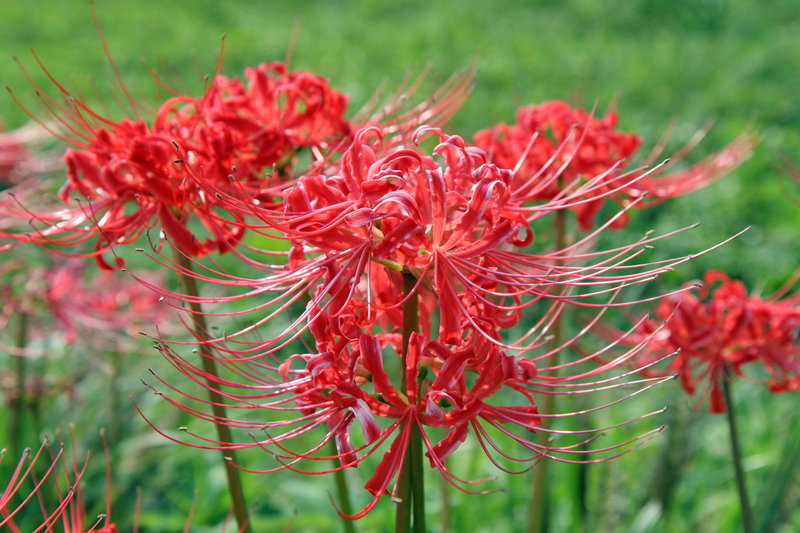Safety First: Precautions and Tips When Clearing Tree Stumps
Removing tree stumps can be a surprisingly challenging and risky task. Whether you’re a homeowner, landscape professional, or DIY enthusiast, understanding the right precautions and techniques is crucial. Ensuring safety when clearing tree stumps not only protects your well-being but also prevents property damage and legal issues. This comprehensive guide presents everything you need to know about tree stump removal safety, common hazards, and practical tips for clearing and disposing of tree stumps with confidence.

Why Tree Stump Removal Safety Matters
Every year, thousands of injuries result from improper stump removal practices. Issues range from minor scrapes to serious medical emergencies. It’s easy to underestimate the force and sharpness of tools involved and the unseen risks beneath the ground. To avoid becoming a statistic, prioritizing tree stump removal precautions is non-negotiable.
- Physical injuries from tools and equipment misuse
- Damage to utilities like gas, water, or electricity lines
- Environmental harm from chemicals or improper disposal
- Property and landscape damage
By learning and applying safe tree stump clearing tips, you not only protect yourself but also maintain the integrity and safety of your property.
Initial Assessments: What to Know Before Starting Stump Removal
Evaluate the Stump and Its Surroundings
Before any removal process begins, take the time to inspect the stump and its environment. Ask yourself:
- What is the stump’s size, species, and age? Hardwood stumps like oak or maple are tougher to remove than softer woods.
- Is the ground sloped or level? Steep or uneven terrain poses added safety challenges.
- Are there obstacles or structures nearby? Look for fences, patios, sheds, or children’s play areas that could be affected by the removal process.
- Are there underground utilities present? Hitting a gas or power line can be fatal and costly. Contact your local utility marking service before digging.
Choose the Right Stump Removal Method
There is no one-size-fits-all technique for clearing tree stumps. Consider factors such as size, budget, environmental impact, and safety:
- Manual Removal: Suitable for small stumps; involves digging and cutting roots.
- Chemical Removal: Speeds up decomposition using stump removal chemicals; best for patient, low-risk jobs.
- Burning: Requires local permits and strict adherence to fire codes; suitable where permitted.
- Stump Grinding: Quick and highly effective for larger stumps; requires specialized equipment.
- Professional Tree Stump Removal Services: The safest bet for large or risky jobs.
The selected method will dictate the specific safety precautions when clearing stumps you need to take.
Essential Personal Protective Equipment (PPE)
No matter your stump removal method, always equip yourself with the right personal protective gear. This cannot be stressed enough. Using PPE dramatically reduces your injury risk and gives you confidence as you work.
- Sturdy gloves to guard against cuts, splinters, and blisters
- Safety glasses or goggles to protect your eyes from debris and wood chips
- Steel-toed boots with nonslip soles for foot protection
- Long sleeves and pants to shield your skin from abrasions
- Hearing protection when using power equipment like chainsaws or stump grinders
- Dust mask or respirator for chemical or machine-powered methods
- Helmets or hard hats in situations where overhead hazards exist
Safe Manual Tree Stump Removal Techniques
Manual removal is labor-intensive, best for smaller stumps, and typically involves digging, sawing, and cutting roots. Here are expert steps for safe manual stump extraction:
- Dig a trench around the perimeter using a mattock or spade. This exposes large roots.
- Cut roots cleanly with a hand saw, axe, or root saw. Face away from your body and check your balance before every swing.
- Loosen the stump by progressively cutting and prying. Never force a stuck tool; reposition instead.
- Use leverage with a pry bar or shovel to lift the stump. Don’t overexert; get help with heavy stumps.
- Inspect the hole after removal for stray roots or debris.
Pro safety tip: Always pause to reassess your approach if at any point you feel fatigued, rushed, or unsure. Proper technique is the cornerstone of injury prevention when clearing tree stumps manually.
Operating Power Tools: Chainsaws and Stump Grinders
Chainsaws and stump grinders can make stump removal faster and easier, but these machines come with significant safety hazards. Even experienced users should review best practices for operating power tools safely during stump clearing:
Chainsaw Safety
- Inspect the chainsaw before every use for damage, loose bolts, and sharpness
- Read and follow the manufacturer’s safety manual
- Use two hands at all times, keeping a firm grip
- Maintain a stable stance with your feet apart
- Never reach above shoulder height or cut with the tip of the blade
- Clear bystanders, pets, and debris from the work area
- Refuel and adjust the saw on flat, cool surfaces only
Stump Grinder Safety
- Get trained or review demonstration videos for your model
- Check for utility lines and underground hazards before use
- Wear full PPE, especially eye and hearing protection
- Start on level ground and use both hands to operate controls
- Clear the area of all obstacles and ensure children and pets are far away
- Move slowly and methodically; don’t rush or force the grinder
- Turn off the equipment before making adjustments or clearing jams
If you have never used a chainsaw or stump grinder before, consider hiring or consulting with a professional. These powerful machines demand respect and skill.
Chemical Stump Removal: Safe Handling and Disposal
Chemical methods are popular for slowly rotting stumps, but improper use can pose health and environmental risks. If you choose this route for safer stump decay and removal, follow these guidelines:
- Read all product labels and safety warnings before application
- Use gloves, eye protection, and old clothing
- Keep chemicals out of reach of children and pets
- Drill holes in the stump following manufacturer instructions; never improvise
- Store unused chemicals in original containers, away from heat or open flames
- Dispose of containers and residue properly at designated hazardous waste facilities
Important note: In some regions, certain commercial stump removers are banned or restricted. Always check your local regulations before purchase and use.
Burning Out Stumps: Fire Safety Essentials
Burning a tree stump is a last-resort removal approach due to obvious fire hazards. Only consider this method if local fire codes permit and if you strictly adhere to every precaution:
- Secure all necessary permits from fire or city authorities
- Clear a safe zone around the stump, removing flammable materials
- Keep fire extinguishers, water hoses, and shovels nearby
- Never leave a burning stump unattended, regardless of size
- Monitor weather conditions; avoid burning on windy days
- Inform neighbors and be prepared for smoke or embers
- Fully extinguish the fire; stir ashes and check for hot spots over several hours
Warning: Burning stumps is rarely recommended for urban or suburban properties and can result in fines or worse if uncontrolled. Safer, alternative removal methods are always preferable.
General Safety Tips for All Stump Removal Methods
Regardless of your chosen method, keeping these universal safety tips for tree stump clearing in mind helps minimize risk:
- Work during daylight for maximum visibility
- Have a first aid kit and charged phone close at hand
- Stay hydrated and take regular breaks, especially in hot weather
- Lift with your knees – not your back – to prevent strains
- Never work alone on large or complicated projects; a helping hand is invaluable
- Clean up as you go to avoid creating tripping hazards with debris or tools
- Store tools safely when not in use, out of reach of pets and children
When to Call a Professional for Stump Removal
Even with the best intentions, some stumps are too large, difficult, or risky for DIY removal. To keep safety first in stump clearing, consider hiring a professional if you encounter:
- Extremely large or old stumps with extensive root systems
- Stumps located next to buildings, fences, or utilities
- Past failed attempts leading to unusual or stubborn growth
- Special regulations or permits required by local codes
- Unfamiliarity or discomfort using heavy equipment or chemicals
A certified arborist or stump removal contractor has the expertise, liability insurance, and equipment to remove stumps efficiently and safely.
Disposing of Tree Stumps Responsibly
Once your tree stump is finally removed, don’t forget about safe and environmentally-friendly disposal:
- Wood chips from a grinder can be used as mulch around your garden
- Stump wood (if chemical-free) can be added to compost heaps in moderation
- Large stump pieces may need to be transported to a local green waste facility
- Never burn or discard treated/chemically processed wood in regular trash or open air
- Check if your city offers curbside collection for yard waste
Responsible disposal protects wildlife, soil, and water sources and helps you avoid fines or environmental harm.

Frequently Asked Questions About Tree Stump Removal Safety
Is stump removal dangerous?
Yes, stump removal poses several hazards, including tool injuries, strain, exposure to chemicals, and risks from hidden roots or underground infrastructure. Always use personal protective gear and consider consulting a professional.
Can I remove a stump without specialized equipment?
For small stumps, it is possible using hand tools – but never compromise on safety. For medium to large stumps, equipment like stump grinders is far more efficient and generally safer when operated correctly.
How do I check for underground utilities?
Contact your local utility locating service (such as 811 in the US) before any digging or grinding operation. Striking a buried line can cause serious injury or service outages.
Conclusion: Prioritizing Safety Is Non-Negotiable
Tree stump removal, whether by hand, tool, or machine, always involves some risk. By following best practices for tree stump clearing safety, using the proper equipment, and knowing your limits, you can complete the task efficiently and without incident. Remember, safety isn’t just about avoiding harm—it’s about ensuring the best outcome for your property, family, and environment.
Don’t rush the process. When in doubt, consult a professional. Your well-being depends on putting safety first, every single time you clear a tree stump.